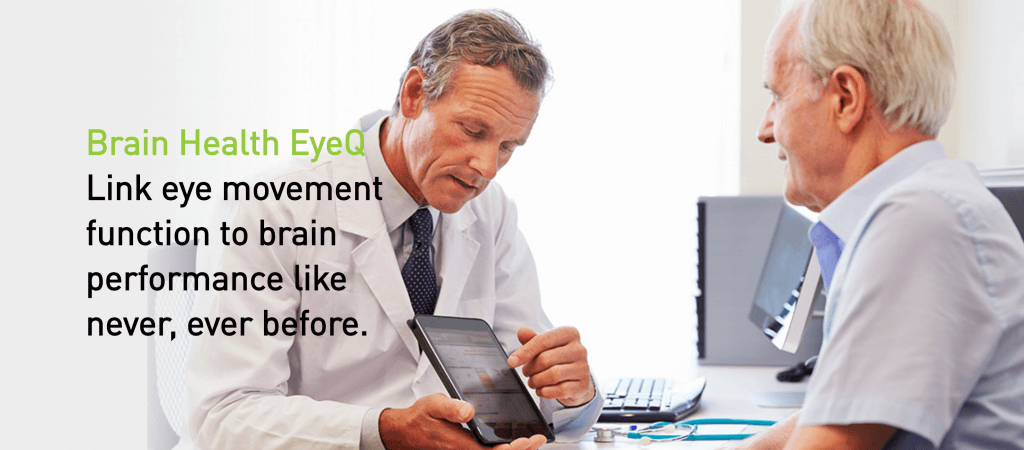Expanding care. Changing lives.
Schedule an Appointment Today!
Expanding care. Changing lives.
Schedule an Appointment Today!
Back to basics.
Whether this is the first you’ve ever heard of eye-tracking or you’re just in need of a refresher, RightEye is here for you.
The information your Auburn, CA optometrist gains assists in the diagnosis and treatment of traumatic brain injury, post-concussion vision disorder, convergence insufficiency, reading problems, and more.
Involuntary eye movements — typically not apparent to the naked eye — indicate visual performance and health concerns. By measuring and analyzing these otherwise imperceptible patterns, doctors can identify and offer treatment to correct a host of vision and health issues as well as increase visual performance. Remember: vision is not the same as eyesight. A person with 20/20 eyesight may still exhibit weak eye movement behaviors.
Eye-tracking technology, which is both objective and non-invasive, captures pictures of eye movements (30-250) times a second. The data produced is quantitative—meaning, it allows physicians to identify vision and health issues in a measurable way. It can assess, and improve, the experiences of athletes. And it can track recovery and identify improvements.
As far back as the 1980s, eye-tracking science and research languished in the halls of academia, only occasionally stepping out into the real world. Yet, during this time, vast amounts of health and vision research and testing created a cumulative understanding of how our eyes work and how they’re connected to the brain; how injuries and illness change how our eyes function; and how eye tracking training can aid in recovery and improve vision performance.
1862. It’s called the Snellen chart after its inventor, the Dutch ophthalmologist Hermen Snellen. While today most doctors use the updated LogMAR chart, it does the same thing: measures how well we see at static images at a distance of 20 feet. Yet, because we primarily rely on vision while our eyes, bodies or objects are in motion, only about 5% of vision problems are identified with an eye chart. This is insufficient for everyone—children, in particular.

Functional Vision EyeQ instantly uncovers eye-movement issues.
RightEye’s uses advanced eye-tracking technology to quickly and objectively identify a host of functional vision issues that impact quality of life. Headaches? Problems with coordination? Feeling “off” or “just not right”? These can be examples of how a person’s health is affected by vision problems.
At your fingertips: an easy-to-read analysis that can better everything.
Functional Vision EyeQ reports are quantifiable evaluations, which help eye doctors see precisely how their patients see. The reports also automatically recommend a personalized EyeQ Trainer treatment program to be done from a home computer. But it’s even bigger than that: the reports’ graphical charts and diagrams make it easy for patients to understand their own vision status—a key component of better doctor-patient relationships and increased participation in treatment.
No more “follow my finger” tests.
Eye movements can reveal how well the brain is working. But the classic “follow my finger” test is limited by, well, the finger. This subjective evaluation is imprecise for even the most skilled practitioners. There has never been a high-precision measurement tool for eye tracking. Until now.
This, you gotta see.
RightEye uses advanced eye-tracking technology and scientifically verified protocols to give patients a deeper, clearer evaluation of their brain’s levels of activity. Our five-minute, non-invasive assessment uncovers eye-movement patterns that may be the result of neurological problems and helps care providers quantify changes. And it provides all of this data in a nice, neat, easy-to-read report.
The report that identifies, quantifies and astounds.
The Brain Health EyeQ report is a graphical, patient-friendly presentation of advanced metrics. It showcases the severity levels of vision skill problems and how this may relate to brain performance. Using the EyeQ report’s measurements allows doctors to identify issues and then make recommendations for improvements, which may include RightEye’s EyeQ Trainer.
One in four children has a vision problem that affects learning.
Even children with 20/20 eyesight can have vision issues at the core of their learning problems. In fact, 50% of vision disorders go undiagnosed. Why? They share the same symptoms as many learning disabilities, including letter reversals, poor handwriting, low comprehension, short attention span, disinterest and more.
RightEye sees how a patient sees.
The RightEye eye-tracking system reveals how children see and, if needed, recommends customized EyeQ Trainer exercises that are done at home from a patient’s personal computer.
In sports, almost 80% of perceptual input is visual.
Even 20/20 eyesight does not mean athletes are performing at their peak. Just because they can see clearly doesn’t mean they can ascertain where an object is in space, how fast it’s traveling or if it’s changing direction.
Sports Vision EyeQ identifies opportunities to strengthen performance.
RightEye’s Sports Vision EyeQ is a non-invasive, objective test that quickly and easily measures and analyzes eye movement, brain processing and reaction time, and compares vision to peers, amateurs and pro athletes. The results are delivered in a graphical, easy-to-read Sports Vision EyeQ report.
From report to action.
Sports Vision EyeQ reports are quantifiable and objective. Their results fuel customized game plans for improvement via RightEye’s Sports Vision Trainer—a video library of 150+ sport-specific drills players complete at home or in the gym. It’s a regimen proven to boost reaction times and achieve the ultimate reward: on-field success.
Better vision is only a trainer away.
RightEye EyeQ reports show visual dysfunction or opportunities to improve for an amazing range of health, vision and performance conditions. That, alone, is a giant leap forward in eye science. But the real magic is what happens next: Getting patients better with EyeQ Trainer.
It’s physical therapy for the eyes.
EyeQ Trainer is a computer-based treatment option proven to help improve visual health. Pulling from a library of exercises, each EyeQ report automatically assigns personalized vision plans that patients complete at home under the supervision of their doctor. Exercises take about ten minutes per day for just a few weeks.
Rehabilitation and improvement are the holy grail.
EyeQ Trainer trains all 12 muscles of the eye. It rehabilitates all six movement systems of the eye and promotes positive plasticity in the neural substrates. The result is improved functional vision and smoother, more accurate eye movements — leading to better focus and concentration, improved balance and hand-eye coordination and enhanced performance in everything from reading to driving to sports.
Expanding care. Changing lives.
Schedule an Appointment Today!





